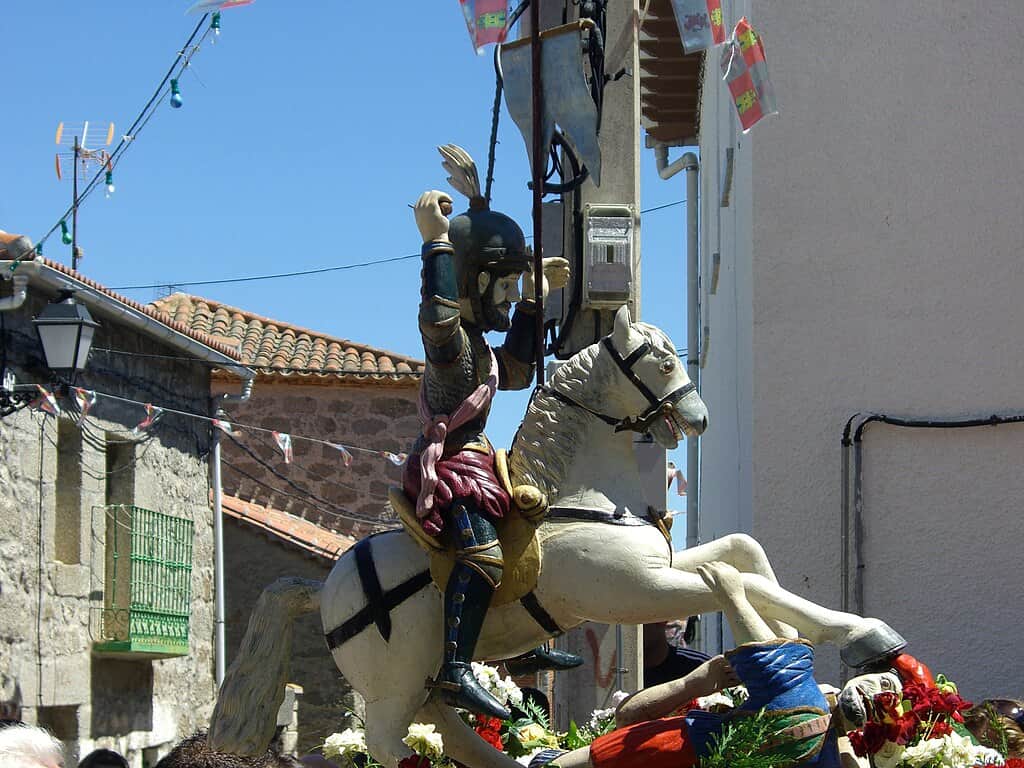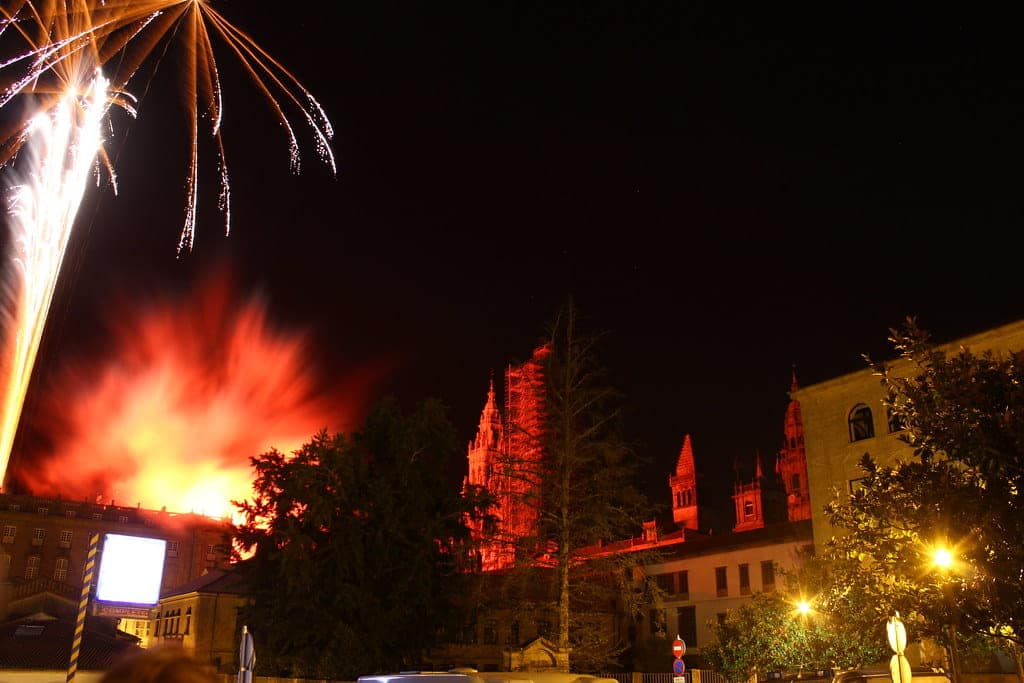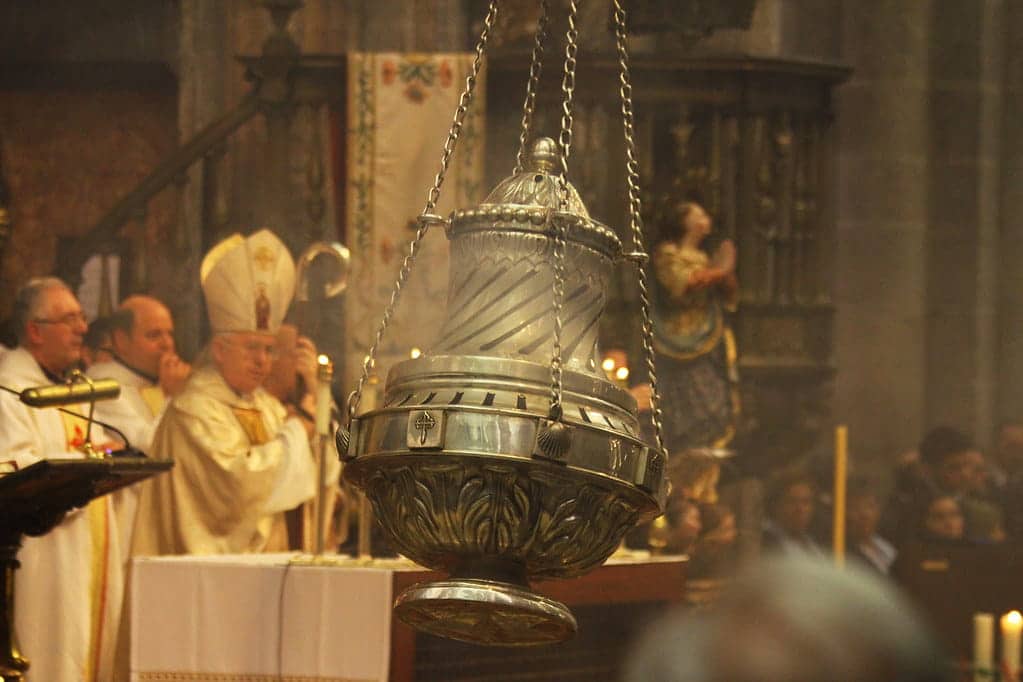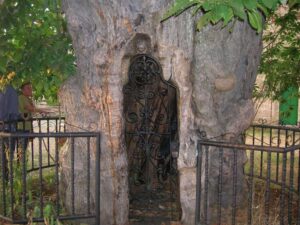
The Festivities of the Apostle, which each year transform Santiago de Compostela into a hub of faith, culture and joy, are much more than a simple local celebration. For pilgrims who have walked countless kilometres, arriving at the Plaza del Obradoiro during this time is to immerse oneself in an unforgettable experience that brings their journey to a truly grand conclusion.
These celebrations are dedicated to Saint James the Greater, patron saint of the city, Galicia and all of Spain. They offer a unique perspective on the Jacobean spirit, blending religious solemnity with vibrant popular festivity.
If your adventure leads you to the Galician capital during the second half of July, you’ll find a city adorned and brimming with life. It offers a programme of activities that honours tradition and warmly welcomes everyone—especially those who, like you, have arrived driven by faith, adventure or personal quest.
Índice de contenidos
What Are the Festivities of the Apostle?

The Festivities of the Apostle are the most important celebration in Santiago de Compostela. This event commemorates the figure of Saint James the Greater, one of the twelve apostles of Jesus, whose tomb, according to tradition, lies within the Cathedral.
These festivities have deep historical and religious roots, dating back to the discovery of the Apostle’s remains and the subsequent development of the Camino as a pilgrimage route.
Origins and Significance
The origin of these festivities is closely tied to the very history of the city. Tradition holds that the Apostle’s remains were transferred to Galicia after his martyrdom in Jerusalem. His tomb was discovered in the 9th century, marking the birth of the city and the establishment of the Camino.
Since then, Saint James the Greater has become a symbol of Christianity and the patron saint of Spain, with his feast day, 25th July, established as a date of great importance.
Key Dates: 24th and 25th July, Galicia Day

While the Festivities of the Apostle stretch over approximately fifteen days in the second half of July, there are two dates that stand out for their special significance and solemnity: 24th and 25th July.
The night of 24th July is one of the most eagerly awaited moments. The Plaza del Obradoiro and its surroundings fill with thousands of people eager to witness a fireworks display that lights up the Cathedral’s façade, often accompanied by projections and music. This event, known as the “Fireworks Spectacle of the Apostle“, is a magical prelude to the main day.
The 25th of July is the central day of the celebrations. In addition to being the feast of Saint James the Apostle, it is also Galicia’s National Day. On this day, the Solemn Pilgrim’s Mass is held in the Cathedral, attended by dignitaries and featuring the traditional Offering to the Apostle.
It is during this Mass that, if conditions allow, you can admire the majestic flight of the Botafumeiro. As you may know, this is a gigantic thurible that swings across the central nave of the Cathedral, creating an atmosphere of mysticism and devotion.
Of course, the city is flooded with cultural activities, traditional Galician music, and a festive atmosphere celebrating both the patron saint and Galician identity.
The Festivities from the Pilgrim’s Perspective
For the pilgrim, arriving in Santiago de Compostela during the Apostle’s Festivities is an experience that adds an extra layer of meaning and emotion to an already profoundly significant journey.
The city, which usually welcomes walkers with a quiet and reflective atmosphere, transforms into a celebratory stage that invites participation and makes you feel part of something much greater.
Arriving in Santiago during the Festivities
If your Camino ends during these dates, you will find a bustling city full of even more life. The streets will be busier, accommodations in higher demand, and the general atmosphere filled with anticipation and joy.
It is a unique moment to experience the town at its most festive, but it also requires early planning, especially regarding accommodation. Many pilgrims choose these dates precisely to enjoy this special atmosphere, so it is recommended to book well in advance if you plan to arrive on the key days. For this, a Camino de Santiago agency can assist you with bookings.
Religious Activities: Pilgrim’s Mass, Botafumeiro, Offering to the Apostle

The heart of the Apostle’s Festivities lies in its religious celebrations, which are of particular interest to pilgrims.
The Pilgrim’s Mass at Santiago Cathedral is a highlight for many, and during these dates it gains a special solemnity. On 25th July, the Solemn Mass with the Offering to the Apostle is a major event attended by authorities and broadcast nationally. If you have the chance to witness it, it will be an unforgettable memory of your pilgrimage.
The Botafumeiro is a spectacle in itself. Although its use is not guaranteed every day, during the Apostle’s Festivities, and especially on 25th July, the chances of seeing it in action are very high. Its movement and the incense aroma create a mystical atmosphere that envelops those present, symbolising purification and the pilgrims’ offering.
Cultural and Leisure Activities: Fireworks, Concerts, Parades
Beyond the religious aspect, the Apostle’s Festivities offer a wide range of cultural and leisure activities that complement the pilgrim’s experience. The fireworks on the night of 24th July are unmissable — a burst of light and colour above the Cathedral that leaves everyone amazed. Finding a good spot to watch them is part of the adventure.
Throughout the fortnight, the city fills with concerts of various musical styles, from traditional Galician music to more contemporary proposals. Squares and streets come alive with parades, performances by folk groups, street theatre, and exhibitions.
Camino Routes That Lead You to the Celebration
Arriving in Santiago de Compostela during the Apostle’s Festivities is, for many pilgrims, the perfect conclusion to weeks — or even months — of effort, reflection, and companionship. And although the celebration is a destination in itself, the Camino is the true journey. Each route offers a different experience, marked by landscapes, people, and shared steps.
Planning your arrival to coincide with these special dates adds extra motivation to every stage. The Camino de Santiago encompasses a wide variety of routes, each with its own character and beauty. Some are more popular and busy, others offer a more intimate experience.
- The French Way is undoubtedly the most iconic. It starts from places as diverse as Saint-Jean-Pied-de-Port, Roncesvalles, or León, allowing you to live an authentic Jacobean experience. It is also the busiest, especially in summer.
- The Northern Way, especially the section of the Camino de Santiago from Bilbao to Santander, combines modernity and tradition. Further along, the Northern Way from Ribadeo offers a route between cliffs and forests, ideal for those seeking coastal landscapes and tranquility.
- The Primitive Way, starting from Oviedo, is considered the oldest of all. It offers a demanding path through mountains and historic trails, ideal for those looking for a more introspective and less crowded pilgrimage.
- The Portuguese Way from Tui passes through charming villages and Atlantic forests, with a strong spiritual and cultural connection between Galicia and Portugal.
- The English Way, traditional among pilgrims arriving by sea from England or Ireland, starts from Ferrol or A Coruña and is an excellent option if you have less time.
- The Sanabrés Way, derived from the Vía de la Plata, crosses the interior of Galicia from Ourense. It combines spirituality, rural landscapes, and notable cultural richness in every stage.
- And for those coming from the south, the Vía de la Plata represents a less-travelled but history-rich route, starting in Seville and crossing the peninsula from south to north.
Tips for Pilgrims During the Festivities
If you have decided to arrive in Santiago during the Apostle’s Festivities, here are some practical tips to make your experience as enjoyable and enriching as possible:
Accommodation and Planning Ahead
As mentioned, the number of visitors to Santiago de Compostela multiplies during the Apostle’s Festivities. This means accommodations fill up quickly. It is essential to book well in advance, especially if you plan to arrive on the key days (24th and 25th July).
Don’t leave this to chance, as you might find yourself without a place to stay after a long day on the Camino. Also consider staying in nearby towns if no availability is found in the city, though this will involve additional travel.
Enjoying the Experience Without Losing the Spirit of the Camino
The Apostle’s Festivities are an explosion of joy and celebration, but it is important to remember that, as a pilgrim, your journey holds a deeper meaning. Enjoy the events, concerts, and festive atmosphere, but do not forget the purpose of your pilgrimage. The Pilgrim’s Mass, the visit to the Apostle’s tomb, and personal reflection remain central elements of the Jacobean experience.
Seek moments of calm and contemplation amidst the hustle and bustle, allowing the solemnity of the Cathedral to connect you with the spiritual essence of the Camino. It is a unique opportunity to blend external celebration with internal introspection.
The Apostle’s Festivities in Santiago de Compostela are an unparalleled crowning glory for any pilgrim fortunate enough to finish their Camino on these dates. It is a celebration that encapsulates the history, faith, and culture of Galicia, offering a memorable experience that goes beyond the tourist perspective. From the solemnity of the Pilgrim’s Mass to the spectacular fireworks, every moment is filled with special meaning.









